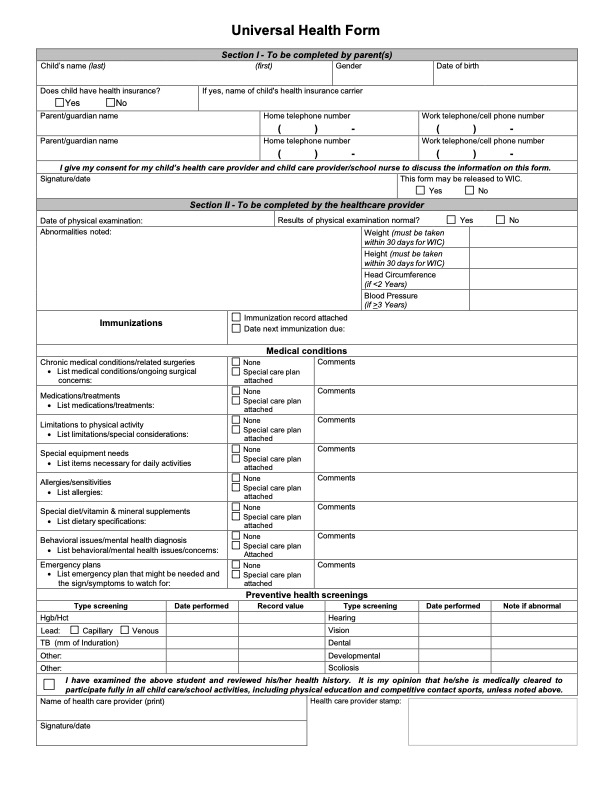Parents or guardians must fill out Universal Health Forms at the beginning of each school year or when enrolling a child in a new school. This allows schools and healthcare providers to have updated information on file for each student.

Universal Health Form
Learn the importance of a Universal Health Form. Download a free PDF and template to guide parents and guardians when completing the form.
Universal Health Form Template
Commonly asked questions
Universal Health Forms typically include basic information such as the student's name, date of birth, emergency contacts, and any known allergies or medical conditions. They may include additional requirements like consent for emergency medical treatment, immunization records, and insurance information.
Universal Health Forms are essential for several reasons. They provide vital information to healthcare providers in case of emergencies or routine medical care. They also help schools keep track of any necessary accommodations or precautions for students with specific health needs. Additionally, these forms can help identify potential health concerns and ensure that students receive proper care at school.
EHR and practice management software
Get started for free
*No credit card required
Free
$0/usd
Unlimited clients
Telehealth
1GB of storage
Client portal text
Automated billing and online payments











